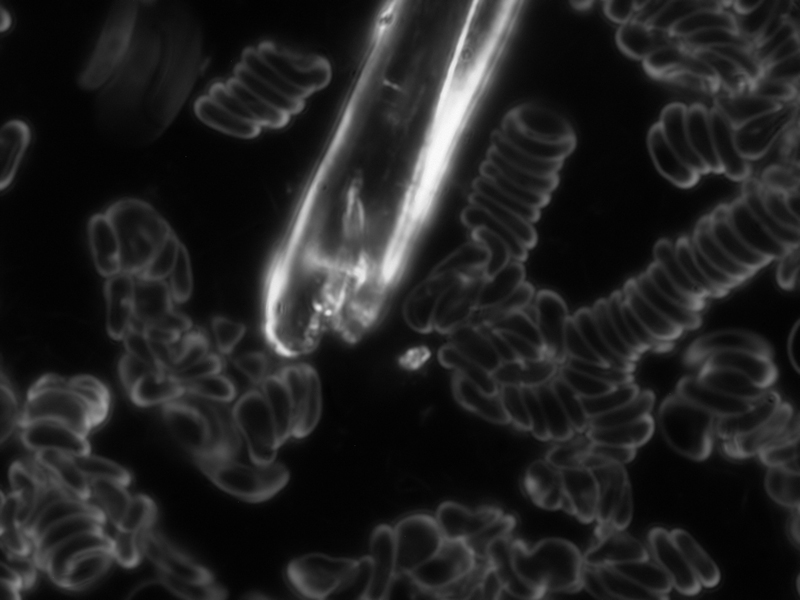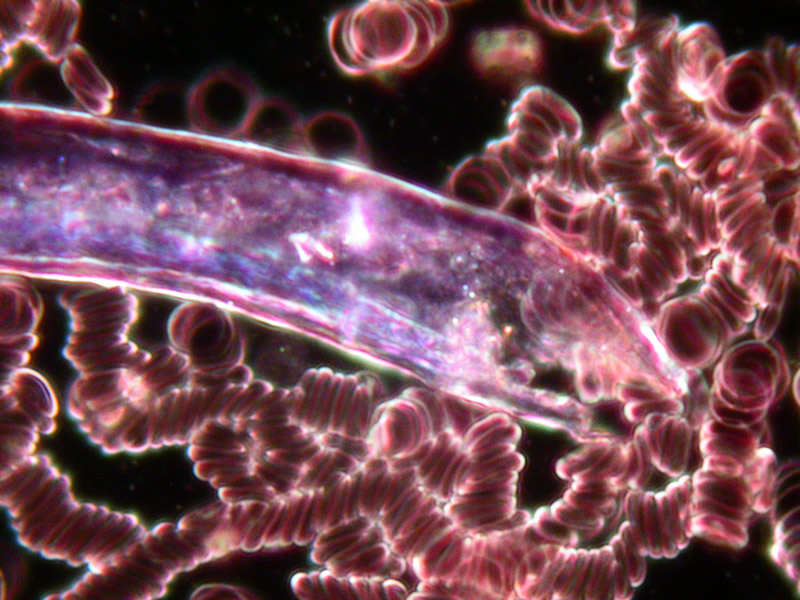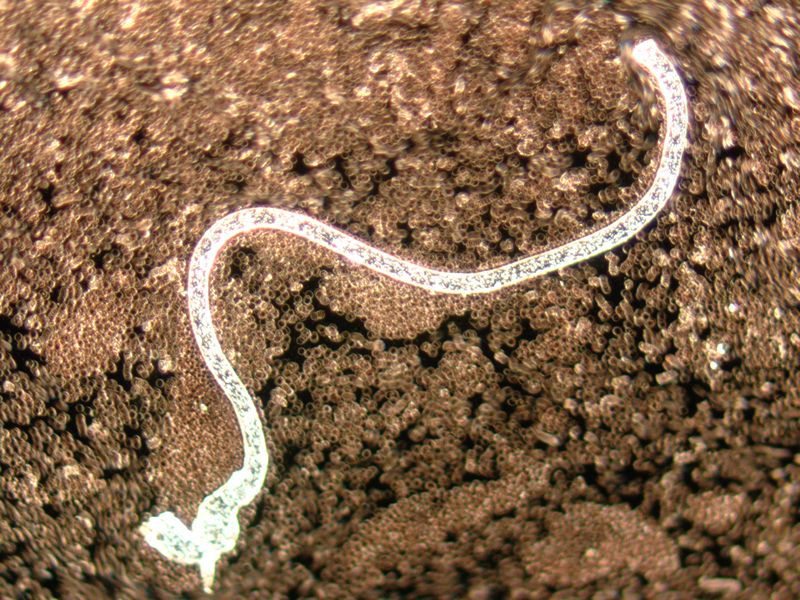
Blood Parasites
Posted to Subscribers on 5 October 2017
The response to my announcements about Ecuador have been a little less than encouraging. However, I am resolved to move forward here. The question is why. The e-mails I received from subscribers made it clear that people do not understand how important darkfield microscopy is to me. The U.S. has very severe restrictions on the use of the scope. I regard this as unconscionable. In my mind, it translates to, “You are not allowed to know . . .” so just as astronomy is taught without reference to realities, the modern medical profession babbles about vaccines and medicines without understanding how the body works. We have to assume this is intentional. The truth would probably ding the bottom line of many large corporations. However, there is much more to my motivations. I feel healthier in Ecuador than here. The air smells better, the food tastes better, and daily life is less stressful.
I had wanted to postpone discussion of darkfield until living in Ecuador, but I will use an example now of parasites to explain what is simply not understood by 99.99% of those in white coats. The first huge issue with blood parasites is that pathologists use the labels “parasite” and “bacterium” almost interchangeably and when questioned about this, they tend to say, “Yes, well . . .” but the interactions between forms are not understood.
Let me start with the parasites themselves. There are thousands of different types and they tend to be quite specific to geographical regions. The first divisions might be those that live inside red blood cells and those that are in the plasma. Obviously, the size and behaviors and effect on the body differ enormously. The second major distinction is toxicity. As I have explained in previous posts, parasites come in many descriptions and can be broadly understood as miniature snakes. Just as there are pythons, boa constrictors, and cobras, the equivalents, hair raising as it is, can be found in the plasma. The hunting patterns and alleged commensal relationships also differ. Let me see if I can put this simply. If a parasite is not toxic, it does not necessarily translate to safe. In medical textbooks, the treatments are often regarded as worse than the infection, but this is because the treatments tend to use highly toxic substances like arsenic. What I am suggesting is that just because a parasite is not “dangerous” does not mean it is the body’s friendly garbage collector. My observations are that there are some very tiny organisms that eat substances in the plasma, probably some nutrients as well as thrombocytes. However, the vast majority eat red blood cells. These are much bigger and some have voracious appetites. There are some that seem to discriminate and eat only weak red blood cells. Arguing that they are commensal is however a stretch; and when you watch the normal metabolic actions of living organisms, you may change your mind when a parasite relieves itself in your plasma. I assure you, this is an unpleasant sight. I would also be surprised if itchiness and irritability are not side effects of this absolutely normal physiological behavior. I have watched parasites with their mouths open skipping this erythrocyte and that one, eating only the crenated ones. It gives an impression of respectable hunting techniques. If one were a man with a spear and selected only the old and infirm males as targets, one would perhaps say this is a kind of deferential behavior that assures the continuity of the species since the pregnant females are not killed. However, I do not think the analogy holds over with blood parasites. Yes, some are very selective and much less dangerous than others, but there is still the issue of ammonia and pollution of the plasma. Well, I have a lot of Virgo in my horoscope and can be quite fussy about hygiene.
Then, there are parasites that are like vacuum cleaners and they gulp down 25-40 red blood cells in a very short feeding frenzy, like seconds and then, they repeat this behavior. These can be very long, hundreds of microns. The red blood cells are 7-8 microns so proportionately, this is well beyond David and Goliath or even an anaconda. Each female can lay thousands of eggs a day, tens of thousands of eggs. Assuming that half the offspring are females, we are talking, at minimum, of anemia, and I have seen patients who are so shivering cold that they are wrapped up in five wool blankets in front of a heater and are still trembling. This is suggestive of many tropical diseases so the picture is starting to come into focus.
Then, there are highly toxic parasites, some with really bizarre hunting techniques and apparently toxins on the skin. They can encircle red blood cells and poison only the ones inside the circle. This is like using some acid to predigest food, but this takes place in the plasma, not inside the gastrointestinal tract. So, that is a brief overview of types. Then, there are questions about how they die. Some parasites can live half a century so we are not talking about anything simple here.
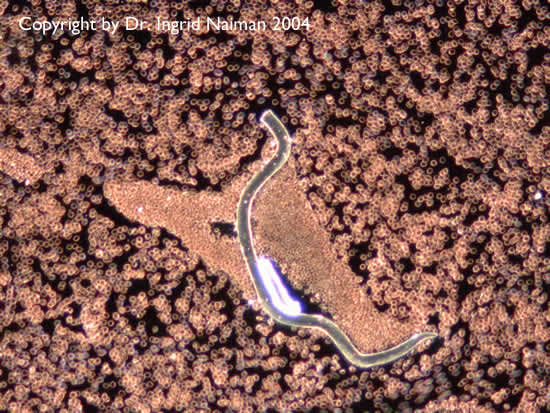
This is an image of a photo I took in Switzerland where the red blood cells immobilized the parasite. Then, a single white blood cell went over to the parasite and sprayed something on the membrane. It did this in several places, carefully avoiding the head and tail. The RBCs moved to create access, and each RBC went to the WBC for instructions before even starting.
So, now one has a wounded parasite that is going to die of its wounds. It is important to keep in mind that the white blood cell inflicted the wounds, not the toxic medicines or herbs. The next step involves the dying parasite and its corpse.
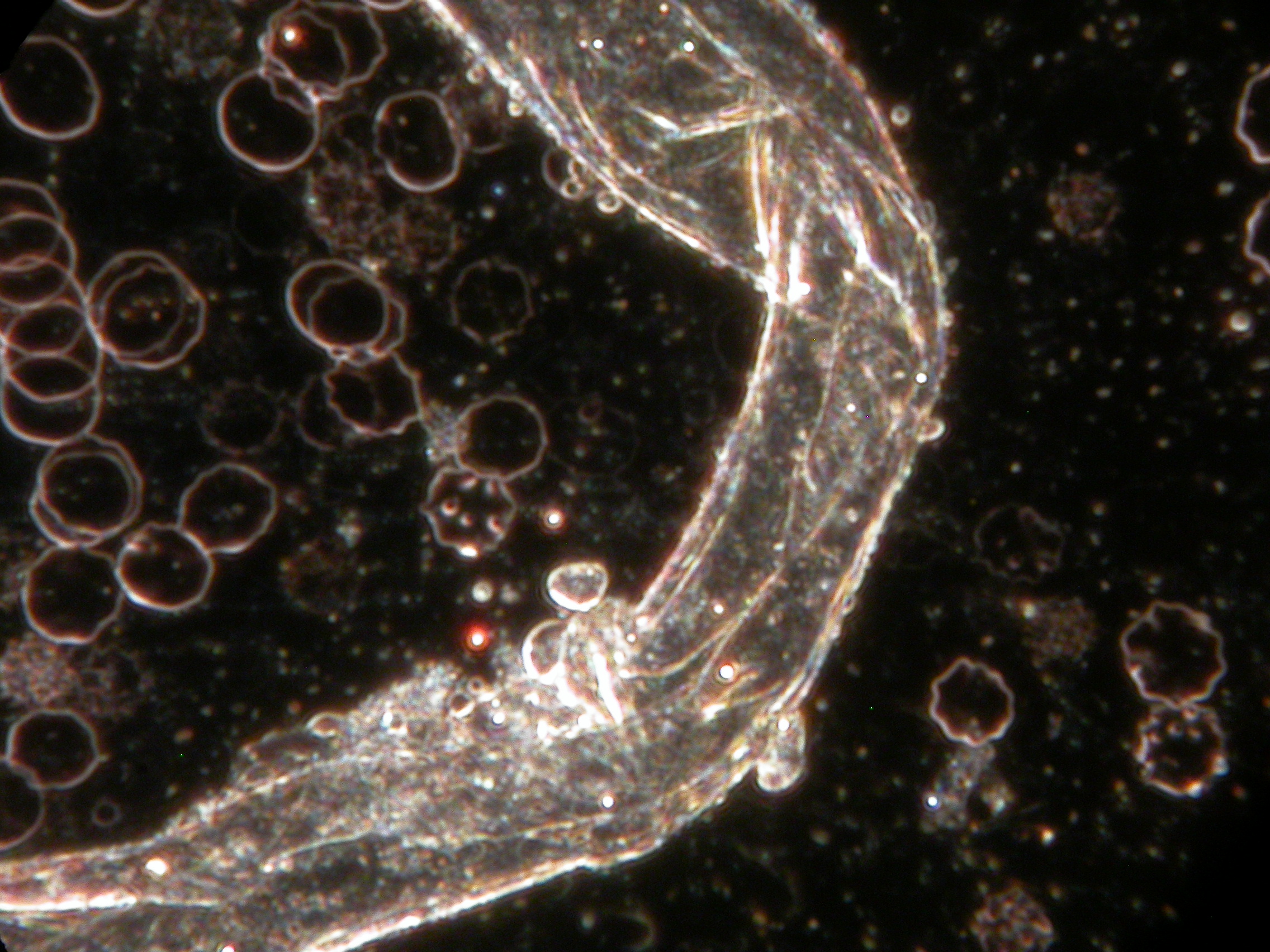
In this image, you see a partially decomposed parasite and several compromised red blood cells. They are the little circles. Every RBC should be the same size and perfectly round. The surface should also be smooth. In this image, you see damaged RBCs and fermentation of the parasite. This occurs when bacteria have been destroyed by antibiotics or harsh chemicals.
I do not want to publish a lot now because these are studies that I have conducted outside the influence of mainstream medicine. However, it is by observing that one learns. Likewise, when administering anything to a patient, one learns the action of that on the patient as well as the unhealthy conditions in the blood. Thus, whether one is testing a juice recipe or herb, one can study the precise impact, but not if one is in a hurry. It takes days and days of patient observation of many, many slides from many patients before confidence in the protocols is complete. Yes, my product line is built precisely on this confidence so you now understand why it is necessary to live in a country where I can pursue these studies.
![]()
Webinar on Blood Parasites
Darkfield Studies Training
Privacy Policy || Report Technical Problems || Permission to Quote || Job Opportunities
Copyright Dr. Ingrid Naiman @ 2014-2020. All Rights Reserved.
For permission to quote, please contact the Institute for Invisible Epidemics.
Poulsbo, Washington, USA.


